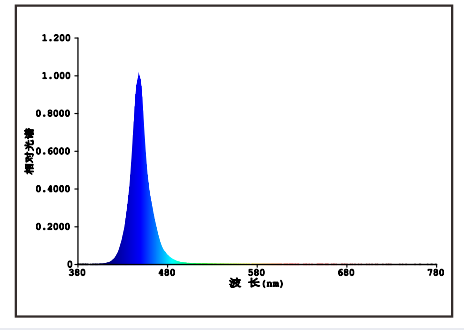UV 390-405nm

- Violet light is the central region of plant phototropism and can affect plant morphogenesis.
- Violet light inhibits the growth of the main stem and foliage of plants (suppresses apprentice growth).
- Violet light stimulates anthocyanin pigments in plants, which induce coloration of fruits/petals or leaves and enhance quality.
Blue 450-460nm

- Blue light is very useful in the early stage of plant growth, helping plants to establish a well-developed root system
- Blue light inhibits the growth of the main stem and foliage of the plant, but increases the thickness of the main stem.
- Chlorophyll a/b has a strong absorption rate in the blue light area, which mainly helps plants to synthesize proteins and amino acids.
- Proper blue light makes the plants grow more evenly and healthily and improves the quality of plant output.
- In low light environment, blue light is not as strong as red light for photosynthesis of plants.
Green light 515-525nm / yellow-green light 550-570nm

- Green light has a certain effect of promoting photosynthesis in plants.
- The effect of green light is greater in strong light conditions (in combination with other light qualities).
- Green light can penetrate the leaf canopy and increase the overall photosynthesis.
- Green light can reduce visual “light pollution” by combining the pink and purple colors produced by the red and blue spectrum.
Plant red light 655-665nm

- Red light is the main force of photosynthesis, and photosynthesis works best under certain blue light conditions.
- Red light mainly helps plants make carbohydrates, which makes plants grow taller and their leaves grow.
- Under low light conditions, red light has the highest photosynthetic efficiency for plants.
Infrared light 730-740nm

- By irradiating infrared light, the photosensitive pigment Pfr is converted to Pr, thereby inhibiting plant flowering and controlling the flowering cycle.
- Used in combination with 660nm, it can realize double light gain benefit, and the photosynthesis efficiency of 660nm alone is much higher.
- Infrared light can produce a shading effect on plants, and plants will try to grow higher when they feel that an object is shading their growth under infrared light. The plant will try to grow higher, which makes the plant grow taller quickly.
